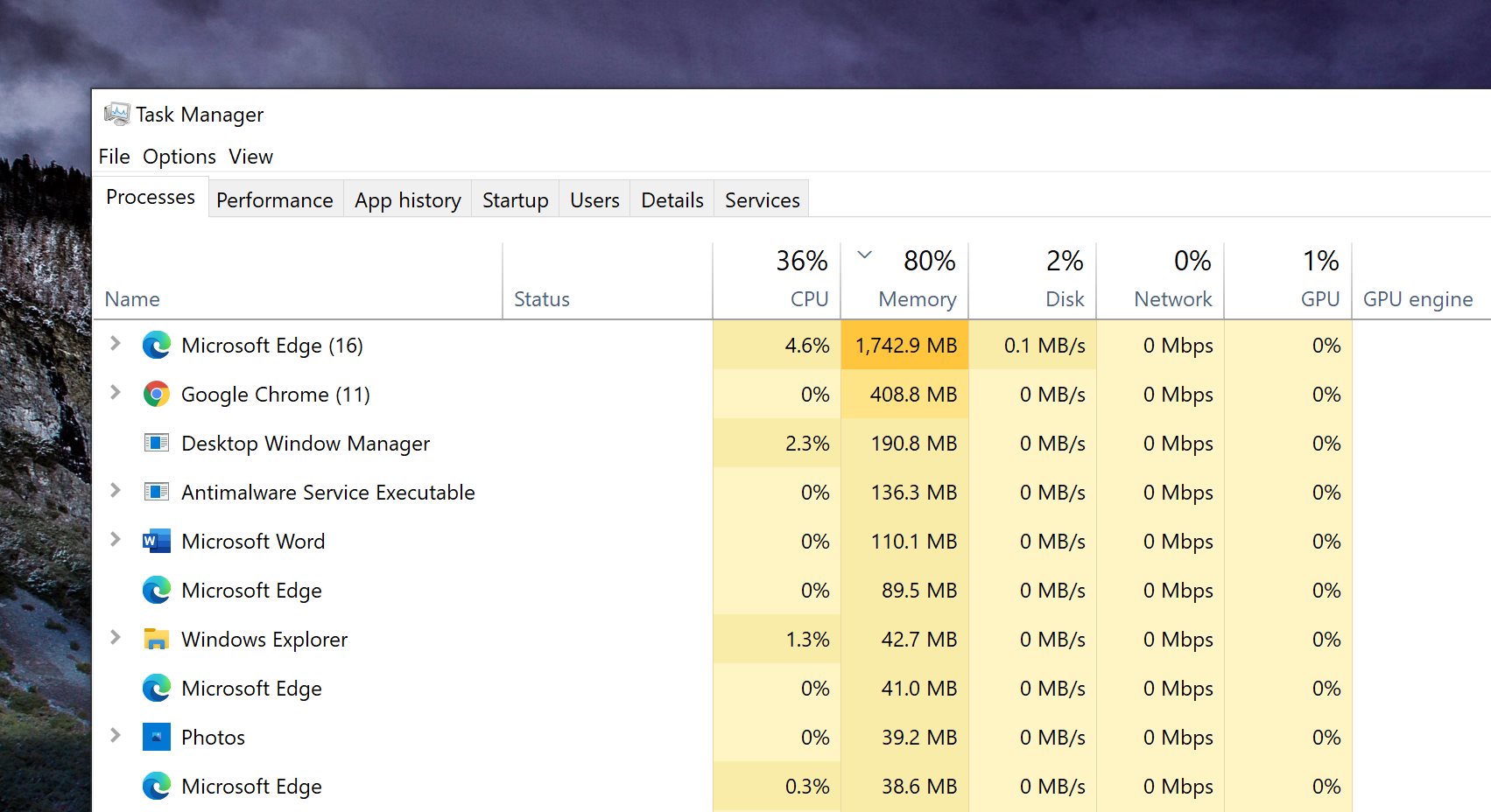Google Chrome has long been a major resource hog, and despite so many improvements shipped by the search giant, it’s still the browser that eats up an insane amount of memory even with just a handful of tabs running at the same time.
But on the other hand, this isn’t something that’s just limited to Google Chrome, and the high CPU and RAM usage is a “feature” that was also borrowed by other Chromium-powered browsers.
Including Microsoft Edge, that is, as the new default browser in Windows 10 runs on the same engine as Google Chrome – the Chromium engine also allowed Microsoft to bring Edge to non-Windows platforms, so the app is also available on macOS too, with a Linux version also on its way.
So yes, Microsoft Edge also comes with the high memory usage too, albeit at first glance, this problem is not at big as Google Chrome’s. In other words, while Edge too eats up too much memory on Windows 10 devices, it’s far from the resource hog that Chrome has become.
But certainly, there is plenty of room for improvements, and Microsoft has already started the work in this regard with the release of the May 2020 Update a few weeks ago. Windows 10 May 2020 Update, or version 2004, is now rolling out to the first wave of devices, with broad availability expected in a few months.
Microsoft says it has worked specifically on improving memory usage in the May update for Microsoft Edge, so the first tests have showed a major progress on this. In other words, if you are running the new Chromium-based Microsoft Edge on a device powered by the Windows 10 May 2020 Update, the browser should no longer eat up an insane amount of memory thanks to all these improvements.
Microsoft provides us with a closer look at how everything improved for Edge on the May update:
“With the Windows 10 May 2020 Update, Microsoft Edge has leveraged the Windows segment heap memory improvements now available for Win32 applications to manage memory more efficiently. Early internal testing results of devices on the May 2020 Update are showing a memory usage reduction of up to 27% when browsing with Microsoft Edge. Individual device performance will vary based upon configuration and usage, but the lower memory usage is expected to create a better experience.”
While at first glance Microsoft Edge is the only browser to benefit from all these improvements, there’s a good chance that the memory usage of all Chromium browsers would be refined in Windows 10 May 2020 Update. Sure, some believe that keeping this exclusive to Edge would drive even more users to the new browser, but on the other hand, Microsoft is now a key contributor to the Chromium engine and allowing everyone to reduce memory usage on Windows 10 is something that’s good for users in the long term.
At this point, the new Microsoft Edge is being rolled out to users as an automatic download via Windows Update, while the manual installers are also available for Windows 7, 8, 8.1, 10, and macOS users.
However, beginning with the next Windows 10 feature update, which is version 20H2, the Chromium version of Microsoft Edge will replace the legacy build of the browser, thus becoming the new browser by default in the OS. This means Windows 10 version 20H2 will ship with the new browser pre-installed, and no further action would be required on the user side. However, installing beta and dev builds will still be possible on Windows 10 devices.

 14 DAY TRIAL //
14 DAY TRIAL // 

